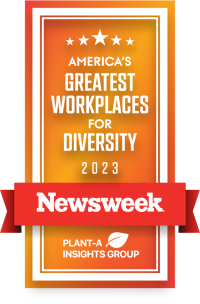What Is Equity, Diversity and Inclusion?

At the University of Maryland Medical System, we have made fostering equity, diversity and inclusion throughout our organization a guiding principle.
While these three terms – equity, diversity and inclusion – are commonly used in conversation, it's important to understand how we define them at UMMS.
Here is what these terms mean to us and how we pledge to do what's necessary to ensure our communities have access to the health care and support they need.
What Is Equity?
When we talk about equity at UMMS, we are focusing on health equity. Health equity means that everyone has a fair and just opportunity to be as healthy as possible.
Breaking Down Systemic Barriers
Many barriers can keep that from happening, such as:
- Inability to take time off work during the day to see a doctor
- Lack of reliable transportation to keep scheduled appointments
- Services may not be covered by insurance or a lack of health insurance
- Mistrust of doctors and healthcare providers based on previous experiences
- Difficulty in finding affordable, healthy food nearby
We are addressing these systemic barriers through partnerships, investments and our unwavering commitment to our community. The UMMS Community Grants program funds organizations that work to reduce these types of barriers in our communities.
Providing Culturally Competent Care
Health equity also requires all healthcare providers and staff deliver equitable and culturally competent care. This means effectively serving patients with diverse values, beliefs, education and behaviors by adapting services to meet our patients' social, cultural and linguistic needs.
Unfortunately, this has not always been the case. There are far too many examples of healthcare providers and staff allowing their own biases to seep into their interactions with others and influence the care they deliver. Sometimes this happens without the provider realizing it; sometimes it does not. This breeds mistrust of the healthcare system in many communities.
At UMMS, we are providing our staff with the education, resources and support that allow them to uncover their own biases and work to address them. Effective policies will also be put into place to closely manage and monitor our behaviors and outcomes. Doing so will allow us to see where we are succeeding and where we must continue to work.
Only when these efforts come together can we begin to deliver accessible, quality and reliable care for all.
What Is Diversity?
Diversity is the range of human differences. It includes, but is not limited to, differences in race, ethnicity, age, gender, religion, sexual orientation, disability or national origin. And at UMMS, we believe these differences should be celebrated and elevated.
It's why we are committed to shaping our leadership and management teams with diverse voices; voices that will better reflect our communities and their unique experiences.
When differences and similarities are embraced among those who seek care and those who provide it, we can understand how to best meet the needs of all of our patients and positively impact the health of our communities.
What Is Inclusion?
Inclusion is actively harnessing diverse perspectives and ideas while welcoming, accepting and equitably treating individuals from different backgrounds. At UMMS, this means we focus on developing and sustaining a sense of value and empowerment in our employees and our patients.
We want everyone who comes into our locations – whether it's for work, for care or to visit a loved one – to feel welcomed. But it goes beyond more than a friendly hello.
We must develop policies and training that include rather than exclude. That can be as simple as offering our pronouns, for example, and asking others for theirs. It can be as complex as training that dives deep into identifying and addressing our unconscious biases. We must also develop welcoming spaces that reflect and represent the diverse communities we serve.
To begin this journey, we identify a series of strategic priorities.

